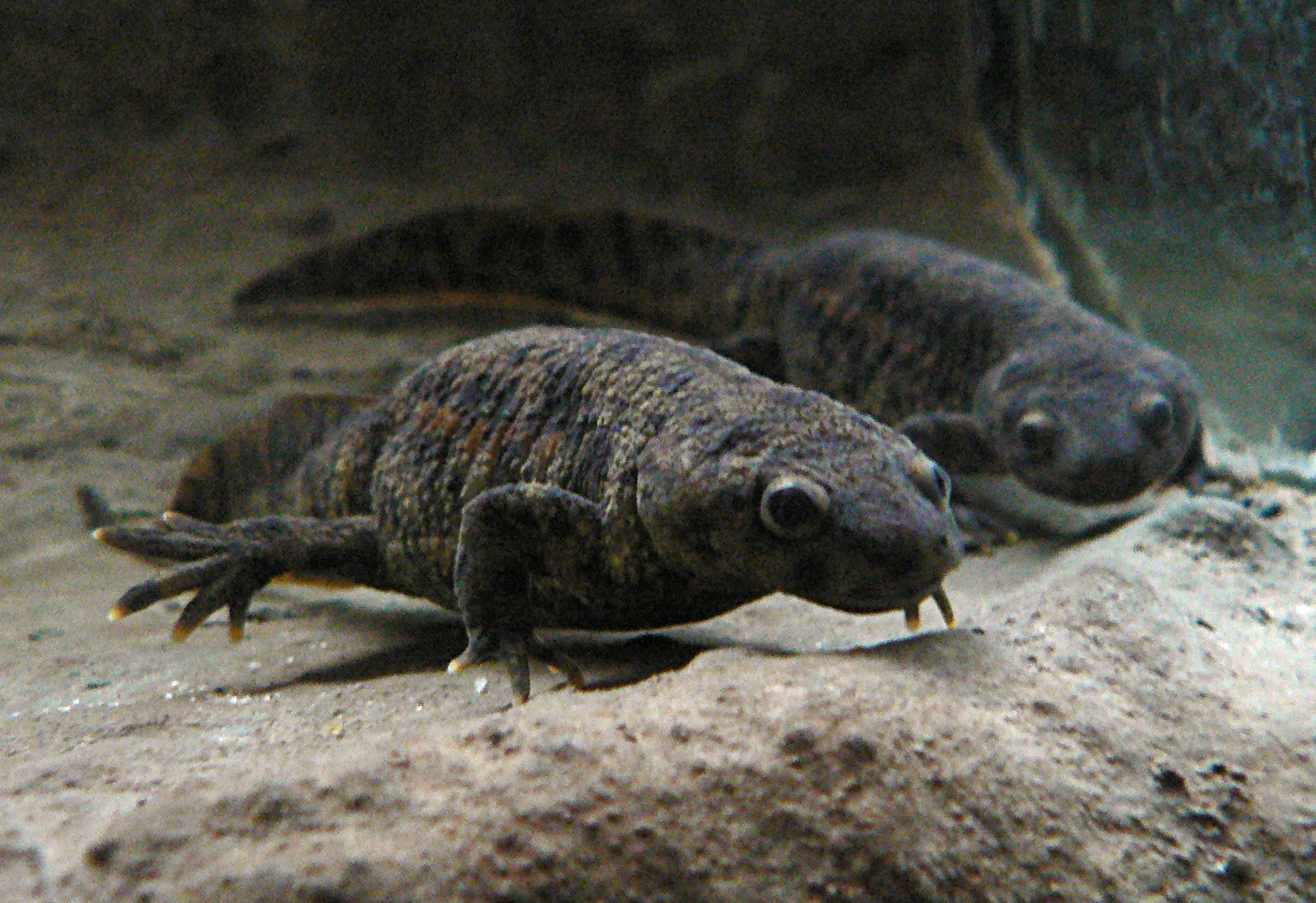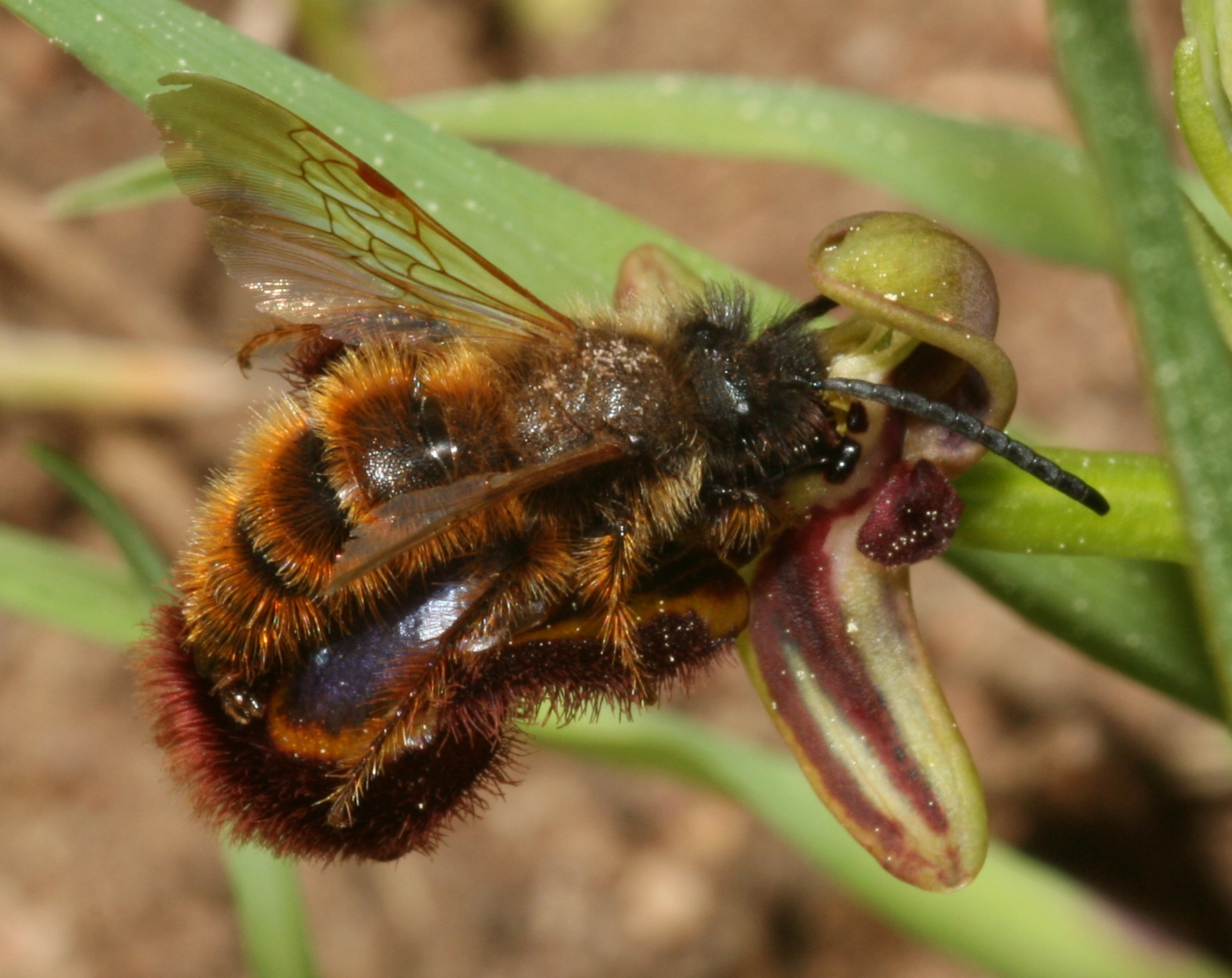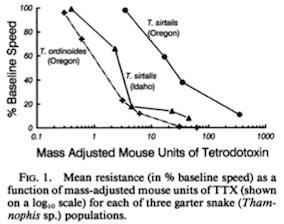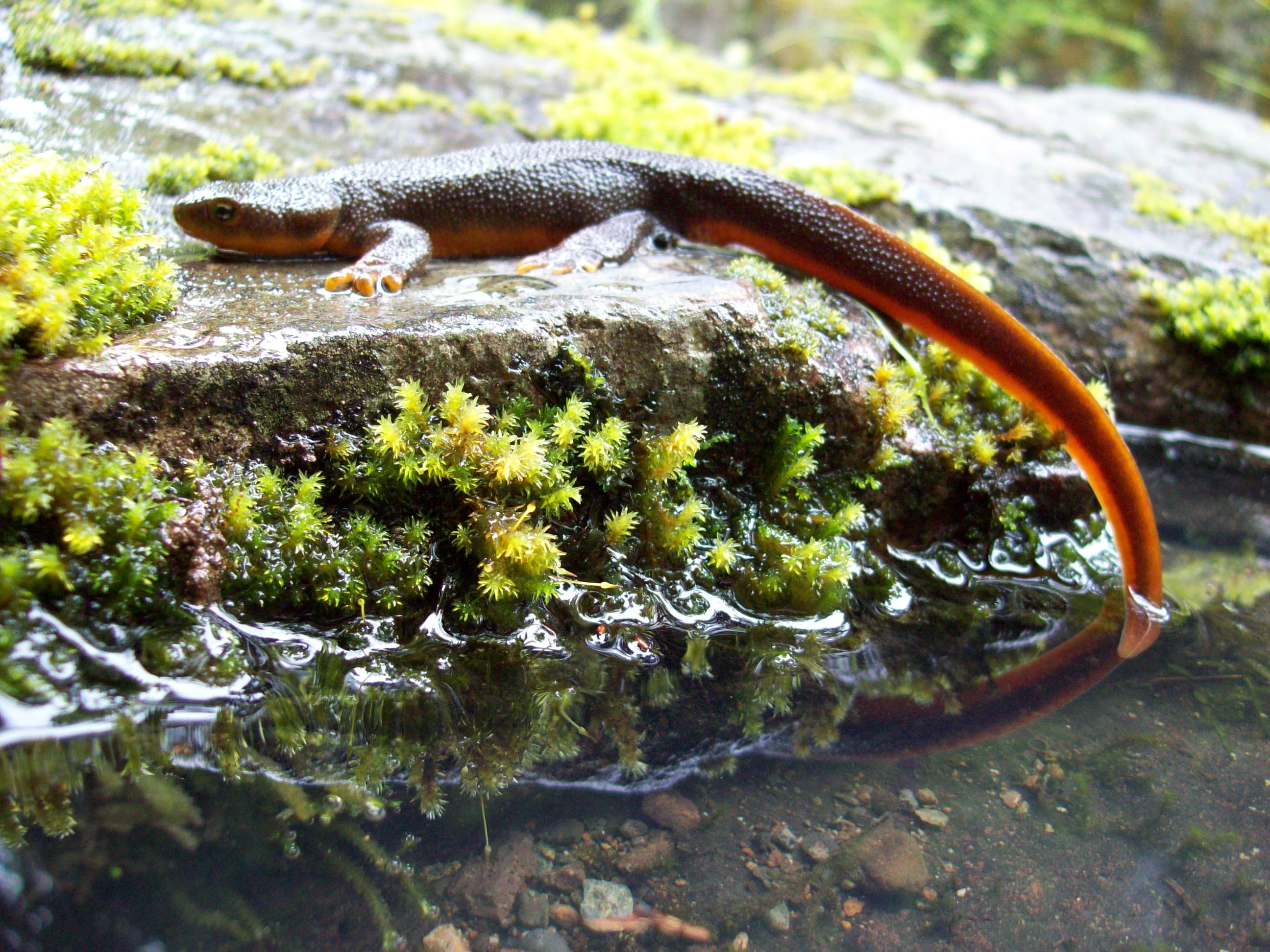|
Rough-skinned Newt
The rough-skinned newt or roughskin newt (''Taricha granulosa'') is a North American newt known for the strong toxin exuded from its skin. Appearance A stocky newt with rounded snout, it ranges from light brown to olive or brownish-black on top, with the underside, including the head, legs, and tail, a contrasting orange to yellow. The skin is granular, but males are smooth-skinned during breeding season. They measure 6 to 9 cm in snout-to-vent length, and 11 to 18 cm overall. They are similar to the California newt ('' Taricha torosa'') but differ in having smaller eyes, yellow irises, V-shaped tooth patterns, and uniformly dark eyelids. Males can be distinguished from females during breeding season by large swollen vent lobes and cornified toe pads. Distribution and subspecies Habitats of rough-skinned newts are found throughout the Pacific Northwest. Their range extends south to Santa Cruz, California, and north to Alaska. They are uncommon east of the Cascad ... [...More Info...] [...Related Items...] OR: [Wikipedia] [Google] [Baidu] |
Avery Judd Skilton
Avery Judd Skilton M.D. (February 1, 1802 – March 22, 1858) was an American physician and naturalist who practiced medicine in Troy, New York, for 30 years. He was also a curator at the Troy Lyceum of Natural History, studying mineralogy, geology, botany, conchology, and paleontology, and in his later years pursued genealogy. Skilton was born in Watertown, Connecticut, the second son of James and Chloe (Steele) Skilton. He attended Yale Medical College. from 1826 to 1827. He commenced the practice of medicine in Troy in the year 1827, and continued it until December 10, 1857, when incapacitated by illness. In addition to medical practice, he pursued natural history, philology , and genealogy. Results of his genealogical efforts were published posthumously in ''Steele Family: A Genealogical History of John and George Steele and Their Descendants''. His contributions to herpetology include the descriptions of the rough-skinned newt (''Taricha granulosa'') and Oregon alligator li ... [...More Info...] [...Related Items...] OR: [Wikipedia] [Google] [Baidu] |
Newts
A newt is a salamander in the subfamily Pleurodelinae. The terrestrial juvenile phase is called an eft. Unlike other members of the family Salamandridae, newts are semiaquatic, alternating between aquatic and terrestrial habitats. Not all aquatic salamanders are considered newts, however. More than 100 known species of newts are found in North America, Europe, North Africa and Asia. Newts metamorphose through three distinct developmental life stages: aquatic larva, terrestrial juvenile (eft), and adult. Adult newts have lizard-like bodies and return to the water every year to breed, otherwise living in humid, cover-rich land habitats. Newts are threatened by habitat loss, fragmentation and pollution. Several species are endangered, and at least one species, the Yunnan lake newt, has become extinct recently. Etymology The Old English name of the animal was , (of unknown origin), resulting in Middle English ; this word was transformed irregularly into , , or . The initial ... [...More Info...] [...Related Items...] OR: [Wikipedia] [Google] [Baidu] |
Halipegus Occidualis
''Halipegus'' is a genus of trematode in the family Derogenidae. The status of ''H. eccentricus'' has been disputed. In 1998, it was suggested that it be regarded as a junior synonym of ''H. occidualis'', but this was rejected in 1999. Species The following species are accepted within ''Halipegus'': * ''Halipegus africanus'' Dollfus, 1950 * '' Halipegus alhaussaini'' Saoud & Roshdy, 1970 * ''Halipegus ambalensis'' Gupta & Chopra, 1987 * ''Halipegus barabankiensis'' Choudhary, Ray & Agrawal, 2019 * ''Halipegus bulla'' (Fain, 1953) Skrjabin & Gushanskaja, 1955 * ''Halipegus ctenopomi'' Jones, 1982 * ''Halipegus dubius'' Klein, 1905 * '' Halipegus eccentricus'' Thomas, 1939 * '' Halipegus eschi'' Zelmer & Brooks, 2000 * ''Halipegus ghanensis'' Fischthal & Thomas, 1968 * '' Halipegus insularis'' Capron, Deblock & Brygoo, 1961 * ''Halipegus japonicus'' Yamaguti, 1936 * '' Halipegus kimberleyana'' (Porter, 1938) Skrjabin & Guschanskaya, 1955 * ''Halipegus mehransis ''Halipegus'' i ... [...More Info...] [...Related Items...] OR: [Wikipedia] [Google] [Baidu] |
Trematode
Trematoda is a Class (biology), class of flatworms known as flukes. They are obligate parasite, obligate internal Parasitism, parasites with a complex biological life cycle, life cycle requiring at least two Host_(biology), hosts. The intermediate host, in which asexual reproduction occurs, is usually a snail. The definitive host, where the flukes sexually reproduce, is a vertebrate. Infection by trematodes can cause disease in all five traditional vertebrate classes: mammals, birds, amphibians, reptiles, and fish. Etymology Trematodes are commonly referred to as flukes. This term can be traced back to the Old English name for flounder, and refers to the flattened, rhomboidal shape of the organisms. Taxonomy There are 18,000 to 24,000 known species of trematodes, divided into two subclasses — the Aspidogastrea and the Digenea. Aspidogastrea is the smaller subclass, comprising 61 species. These flukes mainly infect Bivalvia, bivalves and Osteichthyes, bony fishes.https://www.bi ... [...More Info...] [...Related Items...] OR: [Wikipedia] [Google] [Baidu] |
Evolutionary Arms Race
In evolutionary biology, an evolutionary arms race is an ongoing struggle between competing sets of co-evolving genes, phenotypic and behavioral traits that develop escalating adaptations and counter-adaptations against each other, resembling an arms race. These are often described as examples of positive feedback.Dawkins, R. 1996. '' The Blind Watchmaker'' New York: W. W. Norton. Note: This book was also published by Penguin in 1991. While the text is identical, page numbers differ The co-evolving gene sets may be in different species, as in an evolutionary arms race between a predator species and its prey (Vermeij, 1987), or a parasite and its host. Alternatively, the arms race may be between members of the same species, as in the manipulation/sales resistance model of communication (Dawkins & Krebs, 1979) or as in runaway evolution or Red Queen effects. One example of an evolutionary arms race is in sexual conflict between the sexes, often described with the term Fi ... [...More Info...] [...Related Items...] OR: [Wikipedia] [Google] [Baidu] |
Co-evolution
In biology, coevolution occurs when two or more species reciprocally affect each other's evolution through the process of natural selection. The term sometimes is used for two traits in the same species affecting each other's evolution, as well as gene-culture coevolution. Charles Darwin mentioned evolutionary interactions between flowering plants and insects in ''On the Origin of Species'' (1859). Although he did not use the word coevolution, he suggested how plants and insects could evolve through reciprocal evolutionary changes. Naturalists in the late 1800s studied other examples of how interactions among species could result in reciprocal evolutionary change. Beginning in the 1940s, plant pathologists developed breeding programs that were examples of human-induced coevolution. Development of new crop plant varieties that were resistant to some diseases favored rapid evolution in pathogen populations to overcome those plant defenses. That, in turn, required the development o ... [...More Info...] [...Related Items...] OR: [Wikipedia] [Google] [Baidu] |
Common Garter Snake
The common garter snake (''Thamnophis sirtalis'') is a species of thamnophis snake, in the natricine subfamily, which is indigenous to North America and found widely across the continent. Most common garter snakes have a pattern of yellow stripes on a black, brown or green background, and their average total length (including tail) is about , with a maximum total length of about . The average body mass is . Common garter snakes are the state reptile of Massachusetts. Description Common garter snakes are thin snakes. Few grow over about long, and most stay smaller. Most have longitudinal stripes in many different colors. Common garter snakes come in a wide range of colors, including green, blue, yellow, gold, red, orange, brown, and black. Life history The common garter snake is a diurnal snake. In summer, it is most active in the morning and late afternoon; in cooler seasons or climates, it restricts its activity to the warm afternoons. In warmer southern areas, the snake ... [...More Info...] [...Related Items...] OR: [Wikipedia] [Google] [Baidu] |
Rough-skinned Newt
The rough-skinned newt or roughskin newt (''Taricha granulosa'') is a North American newt known for the strong toxin exuded from its skin. Appearance A stocky newt with rounded snout, it ranges from light brown to olive or brownish-black on top, with the underside, including the head, legs, and tail, a contrasting orange to yellow. The skin is granular, but males are smooth-skinned during breeding season. They measure 6 to 9 cm in snout-to-vent length, and 11 to 18 cm overall. They are similar to the California newt ('' Taricha torosa'') but differ in having smaller eyes, yellow irises, V-shaped tooth patterns, and uniformly dark eyelids. Males can be distinguished from females during breeding season by large swollen vent lobes and cornified toe pads. Distribution and subspecies Habitats of rough-skinned newts are found throughout the Pacific Northwest. Their range extends south to Santa Cruz, California, and north to Alaska. They are uncommon east of the Cascad ... [...More Info...] [...Related Items...] OR: [Wikipedia] [Google] [Baidu] |
Newt Under Water
A newt is a salamander in the subfamily Pleurodelinae. The terrestrial juvenile phase is called an eft. Unlike other members of the family Salamandridae, newts are semiaquatic, alternating between aquatic and terrestrial habitats. Not all aquatic salamanders are considered newts, however. More than 100 known species of newts are found in North America, Europe, North Africa and Asia. Newts metamorphose through three distinct developmental life stages: aquatic larva, terrestrial juvenile (eft), and adult. Adult newts have lizard-like bodies and return to the water every year to breed, otherwise living in humid, cover-rich land habitats. Newts are threatened by habitat loss, fragmentation and pollution. Several species are endangered, and at least one species, the Yunnan lake newt, has become extinct recently. Etymology The Old English name of the animal was , (of unknown origin), resulting in Middle English ; this word was transformed irregularly into , , or . The initial " ... [...More Info...] [...Related Items...] OR: [Wikipedia] [Google] [Baidu] |
Pufferfish
Tetraodontidae is a family of primarily marine and estuarine fish of the order Tetraodontiformes. The family includes many familiar species variously called pufferfish, puffers, balloonfish, blowfish, blowies, bubblefish, globefish, swellfish, toadfish, toadies, toadle, honey toads, Haaris Anwar fish, sugar toads, and sea squab. They are morphologically similar to the closely related porcupinefish, which have large external spines (unlike the thinner, hidden spines of the Tetraodontidae, which are only visible when the fish have puffed up). The scientific name refers to the four large teeth, fused into an upper and lower plate, which are used for crushing the hard shells of crustaceans and mollusks, their natural prey. The majority of pufferfish species are toxic and some are among the most poisonous vertebrates in the world. In certain species, the internal organs, such as the liver, and sometimes the skin, contain tetrodotoxin, and are highly toxic to most animals when ... [...More Info...] [...Related Items...] OR: [Wikipedia] [Google] [Baidu] |
Tetrodotoxin
Tetrodotoxin (TTX) is a potent neurotoxin. Its name derives from Tetraodontiformes, an order that includes pufferfish, porcupinefish, ocean sunfish, and triggerfish; several of these species carry the toxin. Although tetrodotoxin was discovered in these fish and found in several other animals (e.g., in blue-ringed octopuses, rough-skinned newts, and moon snails), it is actually produced by certain infecting or symbiotic bacteria like ''Pseudoalteromonas'', ''Pseudomonas'', and '' Vibrio'' as well as other species found in animals. Tetrodotoxin is a sodium channel blocker. It inhibits the firing of action potentials in neurons by binding to the voltage-gated sodium channels in nerve cell membranes and blocking the passage of sodium ions (responsible for the rising phase of an action potential) into the neuron. This prevents the nervous system from carrying messages and thus muscles from contracting in response to nervous stimulation. Its mechanism of action, selective ... [...More Info...] [...Related Items...] OR: [Wikipedia] [Google] [Baidu] |
Neurotoxin
Neurotoxins are toxins that are destructive to nerve tissue (causing neurotoxicity). Neurotoxins are an extensive class of exogenous chemical neurological insultsSpencer 2000 that can adversely affect function in both developing and mature nervous tissue.Olney 2002 The term can also be used to classify endogenous compounds, which, when abnormally contacted, can prove neurologically toxic. Though neurotoxins are often neurologically destructive, their ability to specifically target neural components is important in the study of nervous systems. Common examples of neurotoxins include lead, ethanol (drinking alcohol), glutamate,Choi 1987 nitric oxide, botulinum toxin (e.g. Botox), tetanus toxin,Simpson 1986 and tetrodotoxin. Some substances such as nitric oxide and glutamate are in fact essential for proper function of the body and only exert neurotoxic effects at excessive concentrations. Neurotoxins inhibit neuron control over ion concentrations across the cell memb ... [...More Info...] [...Related Items...] OR: [Wikipedia] [Google] [Baidu] |








